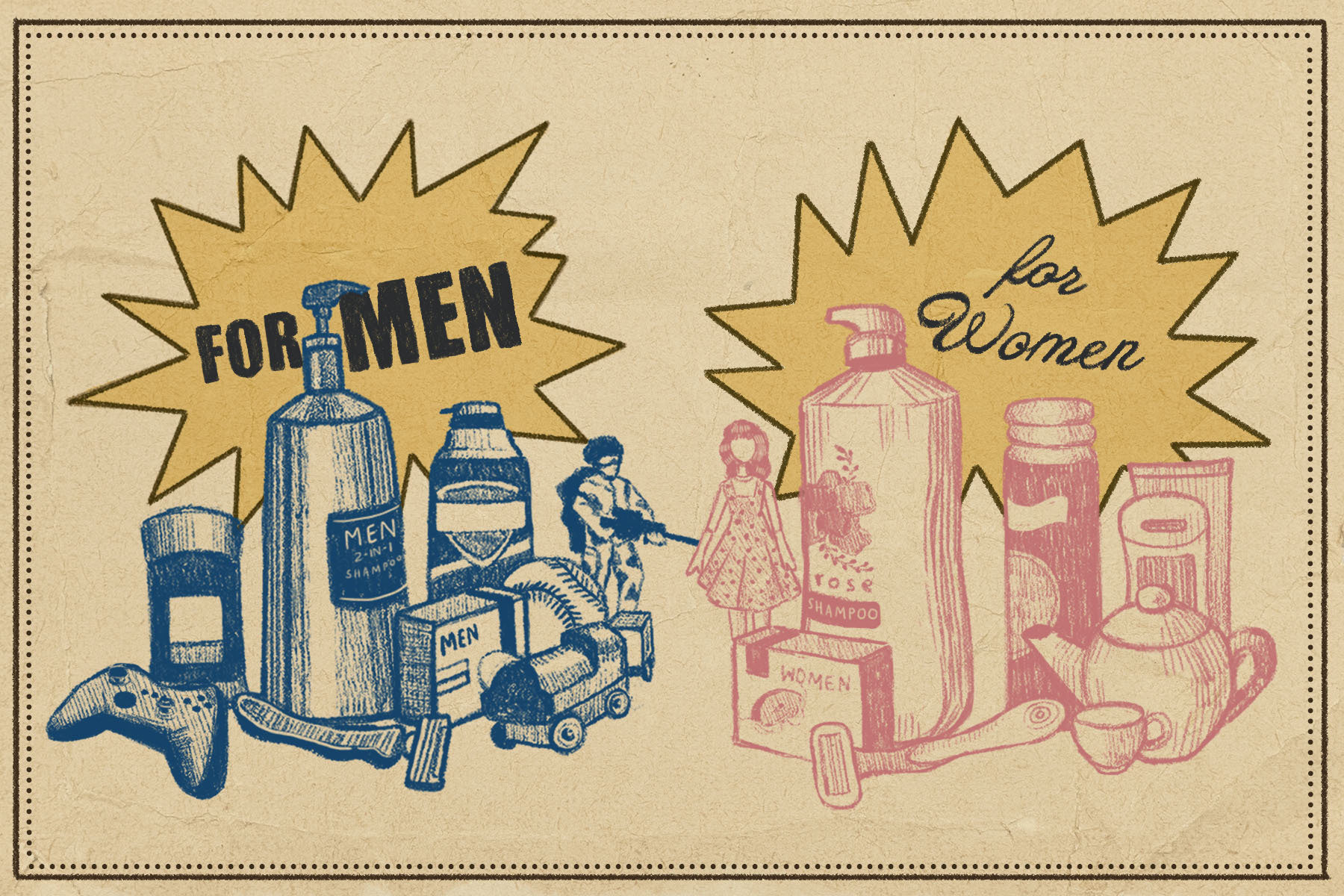From razors to fragrances to even Ouija boards, gendered products take on many forms. Though many male- and female-specific products function similarly, their diction and designs contrast radically. Generally, feminine products appeal to softness and delicacy, while masculine products use hyper-aggressive adjectives. As entertaining as this phenomena appears on the surface, serious consequences arise when advertisers assign gender to a copious amount of products — consequences that can shift the fate of a country.
A commentary video by Youtuber Kurtis Conner explores the extent to which advertisers have affixed gender to products. He provides several examples of essentially useless ways to attribute gender to products such as hammers, medications and shampoos. Conner notes that gendering is most prevalent in hygiene products. For example, five-in-one shampoos marketed towards men list an egregious number of uses. He pokes fun at how shampoos marketed towards women typically use floral designs and elegant diction, while men’s shampoo bottles look like motor oil. Conner even runs his own experiment that compares a brand of wipes targeted at men, Dude Wipes, with the generic Cottonelle brand. While the Dude Wipes claim to be “extra large” for men, they have nearly the same surface area as the Cottenelle wipes. According to Conner, the wipes have identical effects; therefore, the Dude Wipes are no more powerful than the generic brand.
Though most gendered products produce the same results, gender-based marketing strategies still succeed. Their persuasiveness is a result of simple biology. A study published in the Journal of Business Research demonstrates that gendered products act as extensions of sexual dimorphism. Sexual dimorphism is a biological term used to explain how sexes of the same species exhibit different phenotypes (or physical, observable traits). A couple examples include the appearance of peacocks versus peahens and the appearance of mallards versus ducks. Typically, male peacocks and mallards display brighter colors to attract peahens and ducks, as females associate more intense colors with better health and thus greater attractiveness. Since the distinction between genders is not nearly as drastic in humans as it is in animals like peacocks or ducks, humans turn to other means to express their gender identities, such as gendered products. Thus, gendered products appeal to people’s desire to increase their perceived attractiveness.
But in a society where gender identity is becoming more individualized, gendered products are becoming increasingly meaningless. However, the impact of gendered products is difficult to mitigate. Many advertisements rely on the “appeal to gender.” Kyra Skibicki of Palomar College coined the term to describe a fallacy or illusion that encourages a specific attitude or action based on gender and qualities considered appropriate for that gender. Advertisers often use this fallacy to sell more gendered products by touting them as solutions to nonexistent problems. For example, a Secret commercial in the 1980s stated that the brand’s deodorant was “strong enough for a man” but “made for women.” Although the Secret deodorant claimed to eliminate odor more effectively, it likely contained the same specific chemicals found in men’s deodorants. The only differences between men’s and women’s products are the scent and the packaging. Despite this, women’s products continue to use patronizing phrases such as the ones in the Secret commercial.
This effect is not limited to adult products, of course. It is rampant in children’s products as well and, consequently, affects children’s development. In the 1940s, companies developed gendered toys in order to create two avenues of profit rather than one. Forcing certain types of toys on children predisposes expectations of gender onto them before they even have a chance to consider their career aspirations or cultivate their identity on their own terms. The appeal to gender is also associated with the appeals to flattery and guilt. If people conform to the rules of their gender, they are praised; on the other hand, if they traverse their gender’s boundaries, they are chastised. In the modern era, these products reaffirm gender stereotypes instead of encouraging creativity and flexibility in children’s personalities. They quash personal identity under the guise of belonging.
Another consequence of gendered products is the backfire effect. This effect is similar to when parents tell their children to wash the dishes; if the children were already planning on doing so, they suddenly lose the will to wash them on their own. People like to embrace their personal freedom, and when they feel that it is threatened, they recoil from the impact. The backfire effect is more prevalent in women since, historically, society has viewed and treated women as subordinate to men. This became apparent during Hilary Clinton’s presidential campaign. The argument that people should vote for Clinton because she is a woman roused resistance in female voters. Their reaction is significant; gendered campaigning can sway individuals’ decisions in an event as important as the presidential election.
Overall, advertisers design gendered products to appeal to innate biological desires. However, as gender becomes more personalized, the need for gendered products will dissipate. Thus, despite their benign appearance, gendered products pose detrimental consequences for society. By becoming more perceptive of the gender fallacy, people can feel confident and comfortable using any product — regardless of its preassigned gender identity.
















